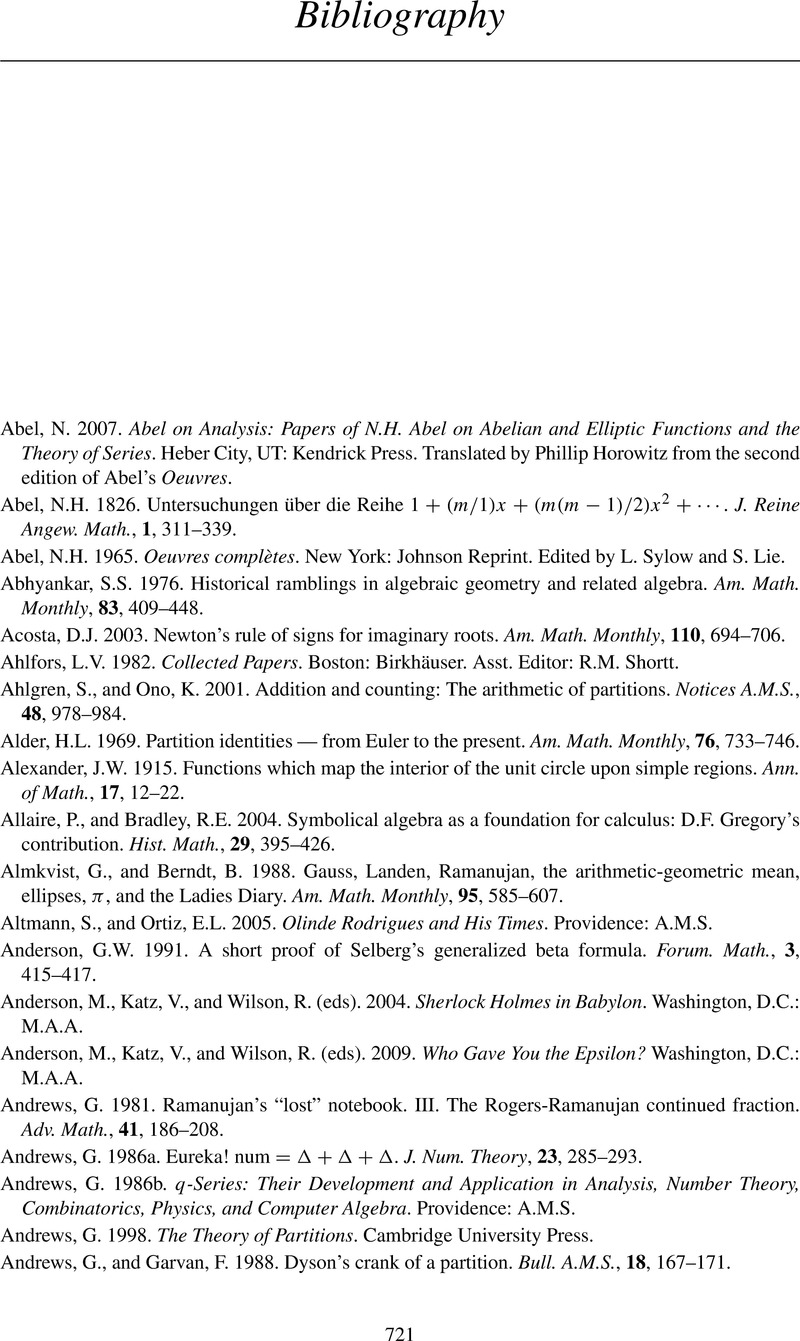Book contents
- Frontmatter
- Contents
- Contents
- Preface
- 1 Power Series in Fifteenth-Century Kerala
- 2 Sums of Powers of Integers
- 3 Infinite Product of Wallis
- 4 The Binomial Theorem
- 5 The Rectification of Curves
- 6 Inequalities
- 7 The Calculus of Newton and Leibniz
- 8 De Analysi per Aequationes Infinitas
- 9 Finite Differences: Interpolation and Quadrature
- 10 Series Transformation by Finite Differences
- 11 The Taylor Series
- 12 Integration of Rational Functions
- 13 Difference Equations
- 14 Differential Equations
- 15 Series and Products for Elementary Functions
- 16 Zeta Values
- 17 The Gamma Function
- 18 The Asymptotic Series for ln Γ(x)
- 19 Fourier Series
- 20 The Euler–Maclaurin Summation Formula
- 21 Operator Calculus and Algebraic Analysis
- 22 Trigonometric Series after 1830
- 23 The Hypergeometric Series
- 24 Orthogonal Polynomials
- Bibliography
- Index
- References
Bibliography
Published online by Cambridge University Press: 12 March 2021
- Frontmatter
- Contents
- Contents
- Preface
- 1 Power Series in Fifteenth-Century Kerala
- 2 Sums of Powers of Integers
- 3 Infinite Product of Wallis
- 4 The Binomial Theorem
- 5 The Rectification of Curves
- 6 Inequalities
- 7 The Calculus of Newton and Leibniz
- 8 De Analysi per Aequationes Infinitas
- 9 Finite Differences: Interpolation and Quadrature
- 10 Series Transformation by Finite Differences
- 11 The Taylor Series
- 12 Integration of Rational Functions
- 13 Difference Equations
- 14 Differential Equations
- 15 Series and Products for Elementary Functions
- 16 Zeta Values
- 17 The Gamma Function
- 18 The Asymptotic Series for ln Γ(x)
- 19 Fourier Series
- 20 The Euler–Maclaurin Summation Formula
- 21 Operator Calculus and Algebraic Analysis
- 22 Trigonometric Series after 1830
- 23 The Hypergeometric Series
- 24 Orthogonal Polynomials
- Bibliography
- Index
- References
Summary

- Type
- Chapter
- Information
- Series and Products in the Development of Mathematics , pp. 721 - 749Publisher: Cambridge University PressPrint publication year: 2021



